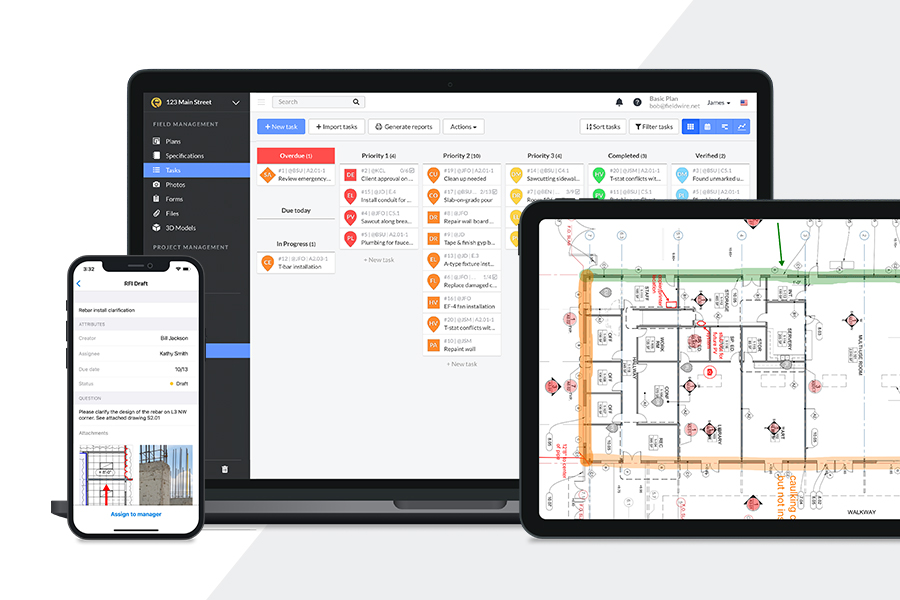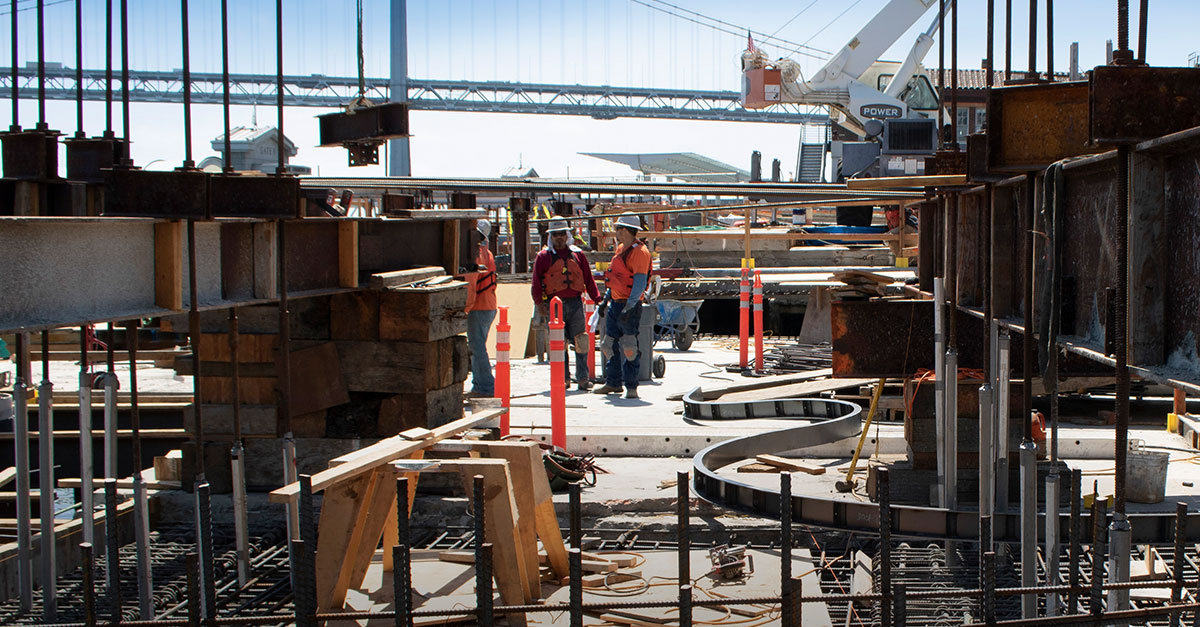Can construction technology alleviate the strain on construction workers?
 The construction labor shortage is a growing concern. It is characterized by a significant gap between the demand for skilled workers and the available workforce. This shortage is due to an aging workforce, fewer young people entering the industry and high turnover rates.
The construction labor shortage is a growing concern. It is characterized by a significant gap between the demand for skilled workers and the available workforce. This shortage is due to an aging workforce, fewer young people entering the industry and high turnover rates.
Addressing worker strain is crucial, as it impacts project timelines and costs and affects the well-being and safety of your team. Alleviating worker strain through innovative construction technologies can enhance productivity, improve job satisfaction, and ensure projects are completed efficiently and safely.
Understanding the construction labor shortage
In the current construction labor market, nearly a quarter of workers in the U.S. are older than 55, with significant numbers either at or close to retirement age. These factors contribute to a severe labor shortage.
This concern impacts project timelines, costs and quality, making it harder for you to complete projects on schedule and within budget. Experts estimate the sector needs to hire 501,000 workers to meet current labor demand. This gap highlights the urgent need for innovative solutions to attract and retain skilled workers while maintaining high standards in construction.
Types of construction technology aiding construction workers
Various advanced technologies tackle the challenges of construction labor shortage. Here are innovations enhancing productivity and reducing the physical strain on construction workers.
Robotics and automation
Robotics revolutionizes the construction industry by taking over repetitive and dangerous tasks to improve overall efficiency. You might see bricklaying or demolition robots handling tasks that are time-consuming and risky for human workers.
By introducing robotics, you can reduce construction costs, decrease labor demands, and enhance the quality and safety of your projects. This automation boosts productivity and creates a safer work environment. It allows your team to focus on more complex and skilled aspects of construction.
Drones
Drones have become invaluable tools in the construction sector, with a range of applications significantly streamlining your projects. You can use drones for site surveying, progress monitoring and safety inspections. They provide real-time data and aerial views that are otherwise hard to obtain.
Drones offer enhanced accuracy, time savings and a reduction in the need for manual labor. By incorporating them into your workflow, you can improve project oversight, ensure safety compliance and make more informed decisions. These upgrades boost efficiency and productivity on job sites.
360° imagery
Utilizing 360° imagery for site visualization and remote inspections can transform how you manage and oversee construction projects. This technology produces an immersive viewing experience and offers greater detail than any single image can provide. It’s useful for training and safety protocols and allows your team to comprehensively explore and understand the site.
The benefits of 360° imagery include enhanced project oversight, improved communication among stakeholders and the ability to conduct thorough inspections without being physically present. These factors lead to better decision-making and a safer, more efficient work environment.
Wearable technology
Wearable technology is becoming increasingly popular in construction. Companies offer tools like smart helmets, safety vests and exoskeletons to enhance your team’s performance significantly. For example, smart helmets provide real-time data and augmented reality overlays to help make informed decisions on-site.

Meanwhile, safety vests with GPS can track worker locations and monitor vital signs to ensure prompt responses in emergencies. Additionally, exoskeletons reduce fatigue and support heavy lifting, making strenuous tasks easier. These wearables improve safety by reducing the risk of injuries. They also boost productivity and job satisfaction by making your team’s work less physically demanding and more efficient.
Building Information Modeling
Building information modeling (BIM) provides a detailed digital representation of your construction projects. It enhances collaboration by allowing all stakeholders to access and update a shared model and ensures everyone is on the same page. This technology reduces rework by identifying and resolving conflicts early in the design phase.
Additionally, BIM automatically detects potential safety hazards and helps prevent potential risks, making your job sites safer. BIM streamlines processes, improves accuracy, reduces costs and shortens project timelines, which leads to higher-quality outcomes for your projects.
Prefabrication and modular construction
Prefabrication and modular construction assemble components in a factory before moving them to the build site for final assembly. Utilizing these methods can significantly reduce on-site labor requirements because much of the work is completed off-site.
This approach speeds up the process, improves quality control and reduces waste. It accelerates project completion times, lowers labor costs and enhances safety. These techniques can help you deliver projects more efficiently and with higher quality standards.
How digital project management can bolster productivity
Digital project management tools revolutionize construction projects by enhancing coordination, tracking and resource allocation. These tools offer features like real-time collaboration, progress tracking and resource management. They also ensure everyone on your crew is aligned and informed.
With 64% of high-performing project teams stating project management maturity is critical, adopting these assistants can elevate your project’s success. Its benefits include improved efficiency, reduced errors and better decision-making. These factors enable you to deliver projects on time and within budget while maintaining high-quality standards.
Moreover, digital project management tools provide advanced analytics and reporting capabilities. They give you insights into project performance and areas for improvement. By automating routine tasks, these components free up your time to focus on strategic decision-making and problem-solving. Additionally, they enhance communication among stakeholders to ensure everyone is on the same page and you can address potential issues promptly.
The impact of technology on worker well-being
Reducing workplace injuries and fatalities is a top priority in the construction industry. This is especially true considering 20% of workplace deaths in 2021 occurred in this sector, with over one-third due to falls, slips and trips. Integrating advanced technologies and safety protocols creates a safer work environment and directly impacts job satisfaction and morale.
Workers feel more secure and valued, leading to higher productivity and loyalty. Additionally, introducing new technologies opens opportunities for upskilling and career development. This allows your team to adapt to modern construction methods, benefiting your projects and workforce.
Challenges and considerations
Investing in new technologies can involve a significant initial spend, but the long-term benefits often outweigh these investments. To ensure the effective use of these new tools, you must provide adequate training for your existing workforce.
You may encounter resistance to change, as some workers and managers hesitate to adopt new methods. However, demonstrating the tangible benefits of these technologies can help ease this transition.
Additionally, it’s crucial to ensure the technology you choose is accessible and scalable for projects of different sizes. Doing so allows you to implement these innovations efficiently across various types of construction work.
Anticipating the future of construction
Embracing technological advancements in construction offers long-term benefits, including increased efficiency, enhanced safety and improved project quality. As a construction management professional, it’s time to adopt these innovations to stay competitive and create a better environment for your team.

 Evelyn Long •
Evelyn Long • 

















